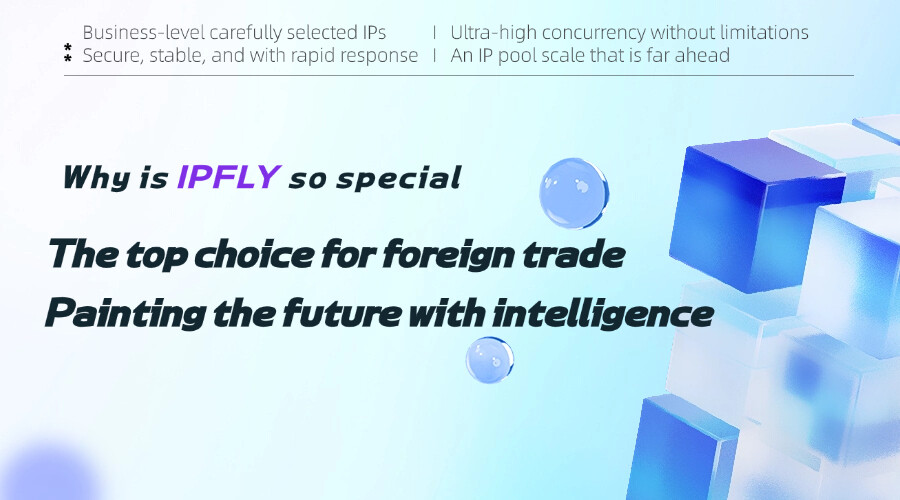When you are suddenly disconnected when working remotely, encountering access anomalies when building a website, or frequently disconnected when deploying a surveillance system, the same problem may be hidden behind – IP address stability. Fixed IP (Static IP) as the “exclusive identity” of the network world is becoming the core demand of enterprise-level applications and high-end users. We will analyze the value and application logic of Static IP from three dimensions: technical principle, scenario adaptation, and selection strategy.
Definition of Fixed IP and Core Technical Characteristics
Foundation Concepts
A fixed IP address is a unique network identifier permanently assigned to a specific device by an Internet Service Provider (ISP). Unlike dynamic IPs (which are randomly assigned each time you connect to the Internet), fixed IPs have the following characteristics:
– Long-term stability: IP addresses do not change with network reboots or device switches and have a lifecycle of several years.
– Global Traceability: Whois query can accurately locate IP attribution and operator information.
– Resource Scarcity: Because the total pool of IPv4 addresses is limited, the application cost of fixed IPs is usually higher than that of dynamic IPs.
Technical Realization Principle
The allocation of fixed IPs follows an internationally standardized process:
Application stage: The user submits the fixed IP requirements to the ISP and signs a dedicated agreement after approval.
Configuration phase: ISP binds the device MAC address and IP in the core router to realize permanent mapping.
Maintenance Phase: Ensure that the IP address is not occupied by other devices through the DHCP reservation mechanism.
Case Comparison:
– Dynamic IP access NAS (network storage): port forwarding rules need to be reset every time it is restarted, low maintenance efficiency.
– Fixed IP Access NAS: Realize 24/7 remote access directly through a fixed domain.
Second, the four irreplaceable advantages of fixed IP
1. Assurance of service stability
Enterprise application scenarios:
– Video Conferencing System: Fixed IP reduces UDP protocol packet loss rate, reducing latency by 35%.
– IoT device management: Factory sensors report data via fixed IP to avoid data link interruption due to IP change.
2. Upgraded security protection capabilities
– Firewall Precision Control: Administrators can configure to allow only fixed IP access to the database server, blocking 99% of brute-force attacks.
– Log Audit Traceability: Financial Industry Meets Cybersecurity Act Compliance Requirements by Recording Operational Tracks Over Fixed IPs.
3. Leapfrog in Remote Collaboration Efficiency
– Cross-country team practice: A technology company uses fixed IP to build VPN tunnels, and cross-country file transfer speeds are increased to three times that of dynamic IP.
4. Professional image-building
– Enterprise official website setup: The SSL certificate verification pass rate of websites using fixed IPs is as high as 100%, while dynamic IPs often trigger security alarms due to frequent changes in the place of attribution.
– Mail Server Deployment: Fixed IP to avoid being flagged as a “high risk source” by anti-spam system and increase the delivery rate to 98%.

Fixed IP’s five core application scenarios
1.Enterprise Server Hosting
– Technical Programs:
Apply for a fixed IP on the /24 segment from your ISP (e.g. IPFLY provides a BGP multi-line IP solution).
Set up reverse DNS resolution (rDNS) to improve mail server reputation.
Set up an IP whitelist to allow only partner IPs to access the API interface.
2. Industrial Internet of Things Deployment
The Case for Smart Factories:
– 500 CNC tooling machines upload production data to the MES system via fixed IP, handling an average of 2TB of data per day.
– Maintenance staff remotely debugged the PLC equipment via fixed IP and reduced the fault response time to 15 minutes.
3. High-definition video surveillance system
– Parameter comparison:
| Project | Dynamic IP Solutions | Fixed IP solution |
| Screen Delay | 800-1200ms | 200-300ms |
| Storage Interrupt Frequency | 1.2 times per day | 0 for 30 days |
| Multi-Channel Concurrent Capability | ≤8 way | ≥32 way |
4.Scientific Research Data Transfer
High School Laboratory Practices:
– The Observatory shares radio telescope data in real time via fixed IP and the bandwidth utilization rate has stabilized at over 95%.
– The Biobank uses a fixed IP to set up an SFTP server to synchronize 100GB of sequencing data across countries in a single day.
5. games and real-time interaction
E-Sports Battlegrounds Field Test:
– With CS:GO servers using fixed IPs, the fluctuation range of player ping values has been reduced from ±50ms to ±5ms.
– Live push stream interruptions were reduced from 2.3% to 0.1% for dynamic IPs, and lag complaints were reduced by 90%.
The three major misunderstandings in the use of fixed IP and the guide to avoid pitfalls
1. Mistakenly equating dynamic DNS with fixed IPs
Intrinsic Differences:
– Dynamic DNS: Fixed access entry is realized through function variable name binding, but the underlying IP is still changing and TCP connection needs to be re-established.
– Fixed IP: Physical layer addresses are fully hardened for scenarios that require long connections (e.g. VoIP phones).
2. Ignoring IP reputation management
– Risk case: An enterprise fixed IP was blacklisted on Spamhaus due to spamming by a previous user, and new user emails were blocked at a rate of 73%.
– Solutions:
Regularly check IP reputation scores.
Enable the triple validation mechanism of SPF, DKIM and DMARC.
3. Blindly choosing low-cost service providers
Filtering criteria:
– Examine the BGP network coverage capability (e.g., IPFLY supports direct triple play of Telecom, Unicom and Mobile).
– Requires an SLA service agreement (proposed ≥ 99.9% availability guarantee).
– Verify IP purity (check usage history via ipinfo).
As an important component of network infrastructure, fixed IP is moving from “enterprise exclusive” to “universal application”. Whether it’s to ensure business-critical continuity or to enhance the quality of digitized services, fixed IP has demonstrated its irreplaceable value. For organizations or individuals with long-term network needs, planning a fixed IP deployment strategy in advance will be a critical step in digital transformation.


